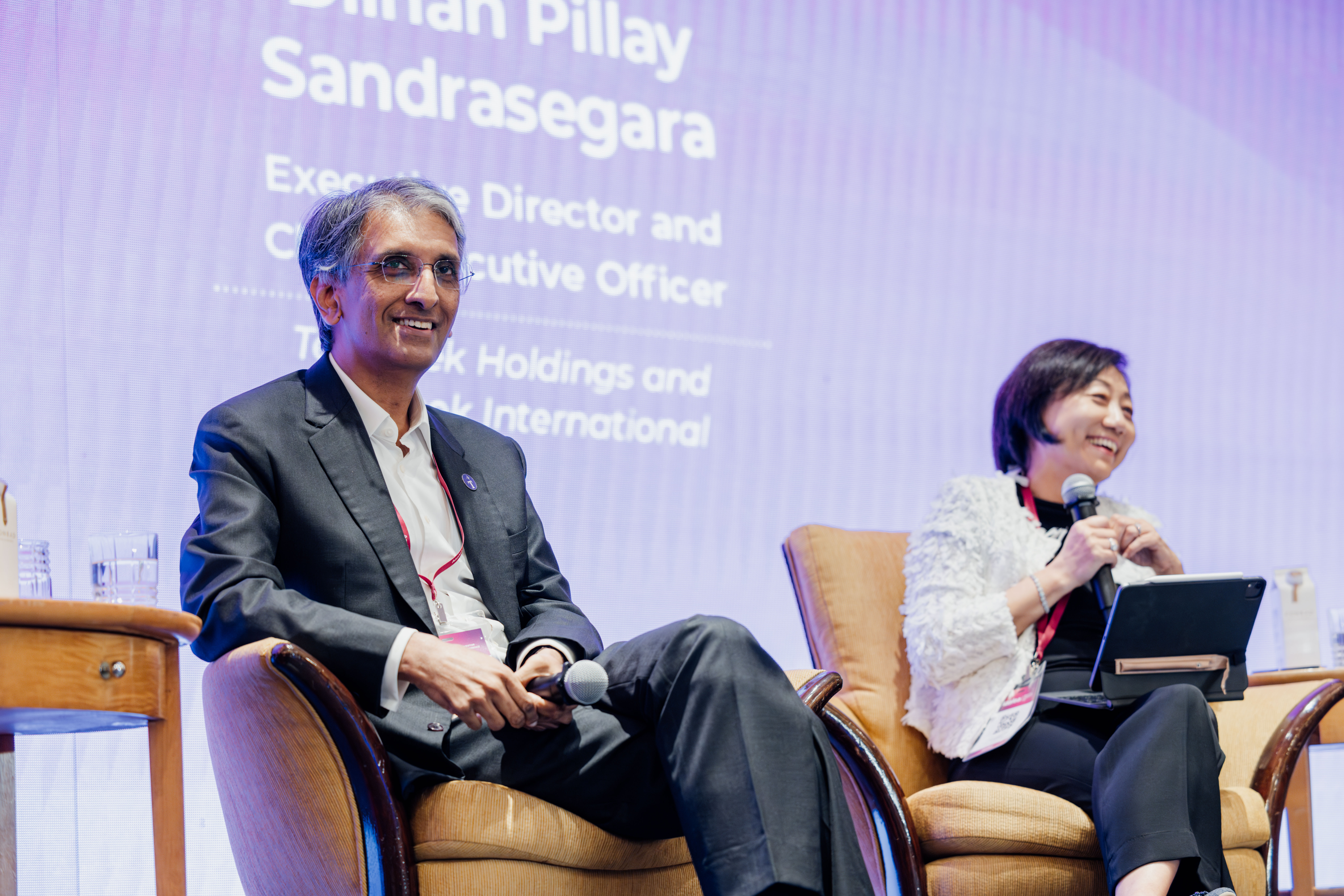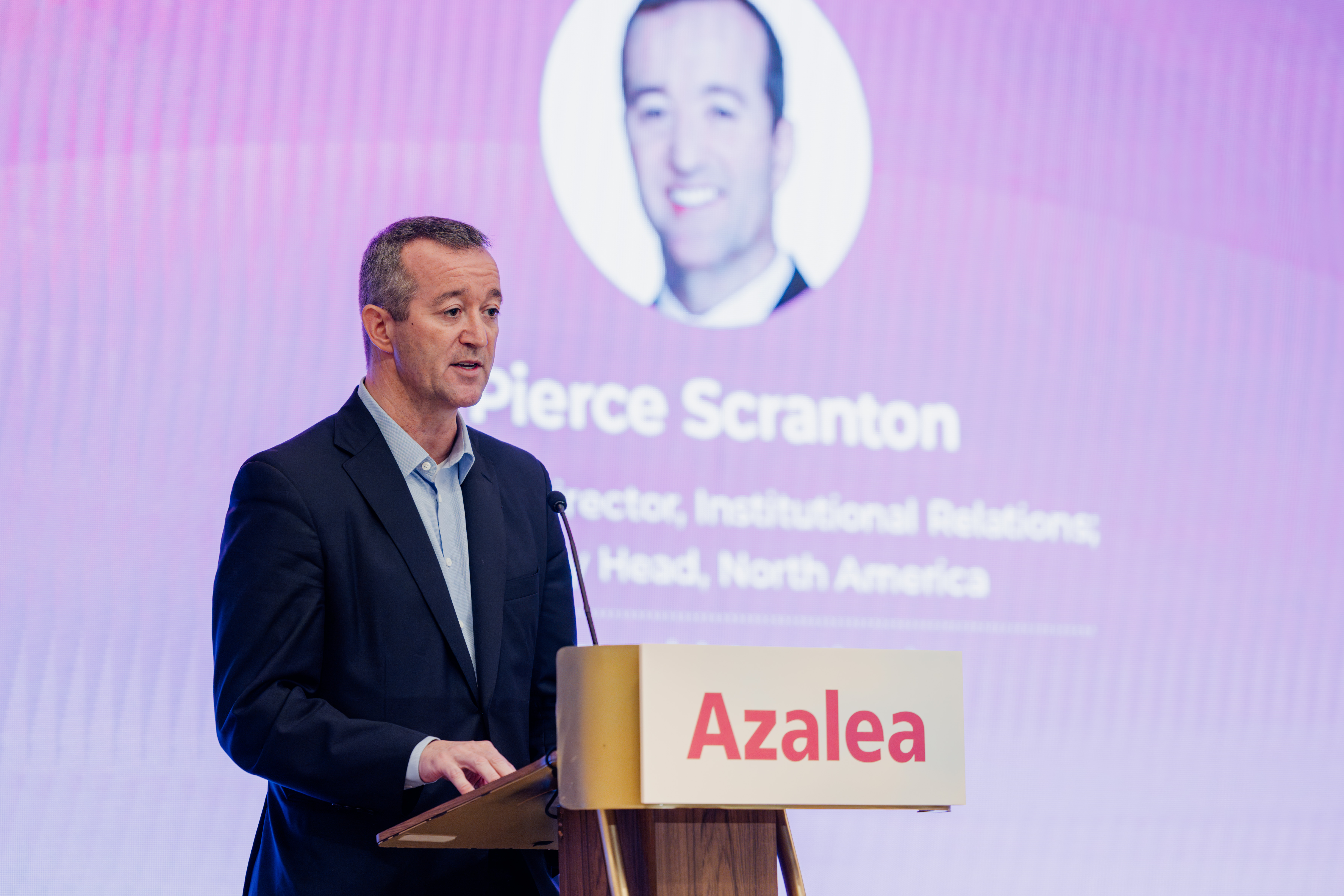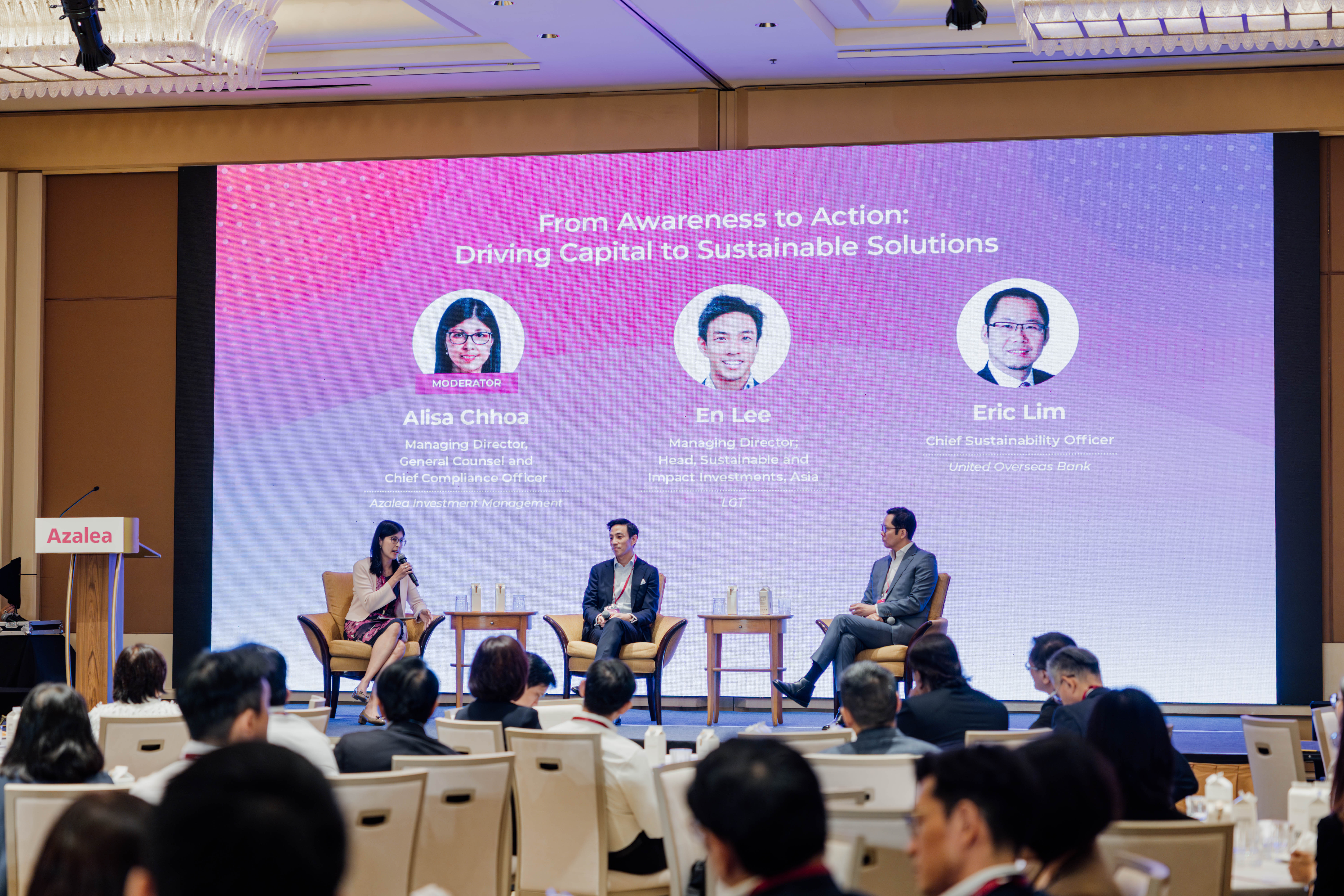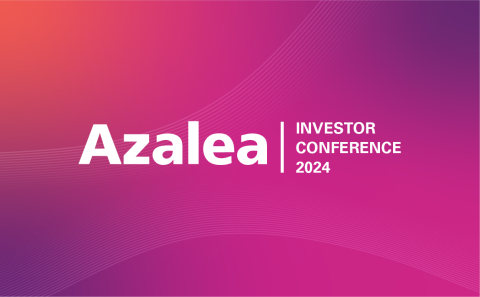
The energy transition is set to reshape economies, businesses, asset prices and investment performance. In this feature piece, we unpack the current state of play and the climate policies driving investment opportunities at each stage of the energy value chain.
Back to top
What Is Energy Transition?

Energy – it powers our homes, workplaces, vehicles and the production of almost everything we use. Much of the energy used today comes from burning fossil fuels like coal, oil and gas, and such generation processes make up a hefty 76%1 of global greenhouse gas (“GHG”) emissions, which, as the science tells us, causes global warming that has far-ranging environmental and health effects.
The term “Energy Transition” refers to the global shift from fossil-based energy production and consumption to renewable energy sources such as solar, wind, hydro and geothermal power. From an investor viewpoint, there are opportunities to participate in this megatrend from both the demand and supply side of the energy system. The pathways towards achieving net-zero span across the entire energy value chain from the production, conversion, and delivery of energy to the use of energy, from infrastructure projects to existing and emerging technologies.
1IEA (2023), Greenhouse Gas Emissions from Energy Data Explorer, IEA, Paris
Back to top
Renewable Energy Generation
Halting global warming is only one driver behind the energy transition. Energy security and energy equity have come to the fore as global instability and rapid inflation threaten uninterrupted access to affordable energy.
The REPowerEU Plan is the European Commission’s proposal to end reliance on Russian fossil fuels before 2030 in response to the 2022 Russian invasion of Ukraine. At the outbreak of the invasion, almost half of EU gas imports were sourced from Russia and in the first two weeks after the invasion, gas prices were up by 180%2. In conjunction with other measures taken, the REPowerEU plan is promoting substantial investment in renewable energy. With EUR$210 billion in new energy investments, the goal is to reach a 45% renewable energy mix by 20303. This translates to at least 15% yearly increases in solar and wind electricity generation from 236 TWh for solar and 475 TWh for wind in 2023 to 621 TWh and 1,276 TWh respectively in 2030 (Exhibit 1).
2European Central Bank, The impact of the war in Ukraine on euro area energy markets
3European Commission, 18 May 2022, REPowerEU: A plan to rapidly reduce dependence on Russian fossil fuels and fast forward the green transition
Exhibit 1
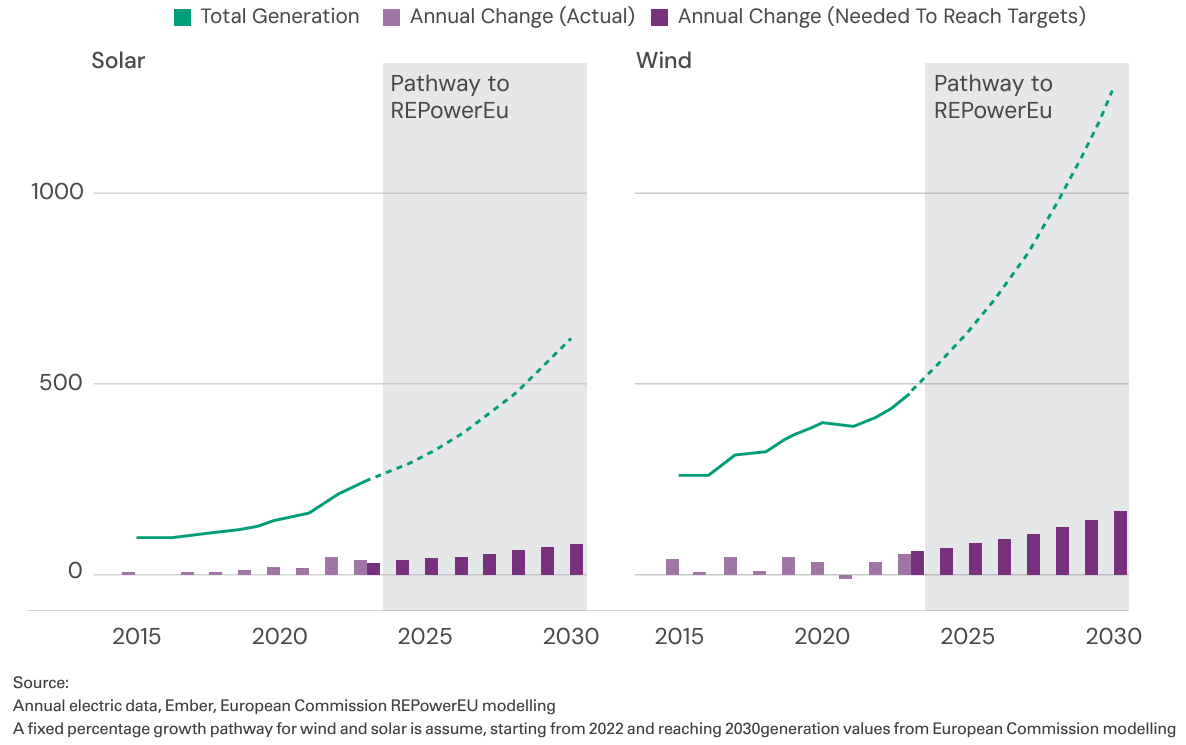
Likewise, the U.S. Inflation Reduction Act (“IRA”), signed into law on 16 August 2022, and the Infrastructure Investment & Jobs Act (“IIJA”) enacted in November 2021, incentivise investment into domestic energy production, distribution and industries deemed important for U.S. national and economic security. Embedded within both legislative instruments are domestic production requirements that stipulate the need for end products and key components to be produced and assembled in the US. Together, the IRA and IIJA allocate more than US$169 billion for renewable energy technologies. The first 12 months into the IRA saw 270 new clean energy projects and US$130 billion worth of investments unveiled4.
So while COP285 saw over 100 countries agree to triple renewable energy capacity and double the global rate of energy efficiency by 2030, the policy stimulus to move towards renewable energy for reasons that include politics, economics and national security had been set in motion earlier. These policies send a powerful signal to investors and are driving significant tailwind for the transition away from fossil fuels.
Singapore, for example, is actively working with investors to fast-track renewable energy development in Southeast Asia (“SEA”), the fourth largest energy consumer in the world. Already home to over 100 clean energy companies, Singapore is attracting businesses to scale up in the region to meet SEA’s and its own net zero climate goals6. Innovative solutions include harnessing renewable energy sources in neighbouring countries, cross-border power grids, the largest Energy Storage System in SEA and other emerging low carbon alternatives such as hydrogen, geothermal and carbon capture.
4Reuters, 23 Nov 2023, Every country needs an Inflation Reduction Act
5COP28 stands for the 28th meeting of the Conference of Parties (COP) to the United Nations Framework Convention on Climate Change (UNFCCC). COP is the main decision-making body of the UNFCCC
6EDB Singapore, An opportunity in Asia’s surging demand for renewable energy
Back to top
The Electric Grid and Storage

At the rate renewable energy installations are taking place and with the electrification of cars, buildings and industry, neglected power grids risk becoming a bottleneck to the energy transition. Over and above catering to increased electricity use and variability of output, new transmission and distribution lines for solar and wind projects are needed to deliver power between deserts and seas to cities and industrial areas. The International Energy Agency has forecasted that 80 million kilometres of grids need to be built or refurbished by 2040 if country climate goals are to be met. That is equivalent to the entire existing global grid, translating into global investments of US$600 billion per year till 20307.
The key difference between power systems based on fossil fuels and a system based on renewables is that energy output from solar and wind can be intermittent. That means a parallel solution is required to store the energy when the weather is favourable and to use it when it is not.
Grid-scale battery energy storage systems are best used for short-term peaks and troughs of intermittency. However, for storage capable of maintaining output for over four hours or longer, long duration energy storage (“LDES”) technologies are required, and these are currently at a lower state of technological readiness.
Again, this is where policy stimulus becomes a game changer for companies and technologies that need to get developed and deployed.
7International Energy Agency, Oct 2023, Electricity Grids and Secure Energy Transitions
Back to top
Electric Infrastructure, Transportation & Energy Efficiency

Besides the power grids, a lot of other infrastructure is needed to make a transition to clean energy. Several countries have already announced national plans for new cars to be zero-emissions by 2035. To give consumers confidence in electric vehicles (“EVs”), investment must be made in EV charging infrastructure. The IIJA not only has billions going out to states to build that infrastructure, but to also upgrade public transit vehicles such as buses and trains.
Another regulatory development that has yet to be mentioned is the U.S. CHIPS and Science Act, which has authorised close to US$200 billion on building and research and development (“R&D”) capabilities. These include R&D technologies for advanced manufacturing, material science and energy efficiency. A good example is new ways of making steel and concrete without the huge amount of pollution it produces.
Retrofitting older buildings will remain a challenge for the U.S. and the EU. Any innovation that improves the energy efficiency for building construction, heating, cooling, lighting as well as all appliances and equipment installed in them will go a significant way in reducing energy consumption. Buildings account for as much as 40% of the EU’s energy use, with most being heated by fossil fuels8. In the wake of Russia’s invasion of Ukraine, Europe ramped up installation of high-efficiency electric heat pumps to help eliminate its dependence on natural gas. Today, more than a dozen European nations offer subsidies to purchase heat pumps. Tax credits and subsidies not only shape market demand, but they incentivise manufacturers and entrepreneurs. Technologies can now be developed to a point where the private sector is sufficiently de-risked to pick it up and run with it.
8Reuters, Mar 2024, EU Parliament approves law to make buildings more energy efficient
Back to top
Conclusion
The energy system is changing at a pace not seen before. Declining costs of renewable energy technologies, coupled with favourable regulatory policies and increasing consumer demand for clean energy, have created a conducive environment for investment in this sector. Global investment in energy transition technologies hit US$1.8 trillion in 2023, up 17% from a year earlier. Investment in new renewable energy projects grew 8% to US$623 billion9.
Global private capital investment in the energy transition came to US$496 billion in the 12 months since the IRA came into effect10.
As investors warm up and plug-in (pun intended) to the fast-changing energy transition landscape, navigating the opportunity set for financial returns and making a real dent in carbon emissions will involve titrating between the dynamics of policy, technology and market demand.
9BloombergNEF, Jan 2024, Global Clean Energy Investment Jumps 17%, Hits $1.8 Trillion in 2023
10S&P Global Commodity Insights, Sep 2023, Financing the energy transition







